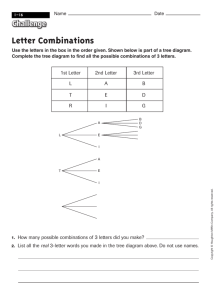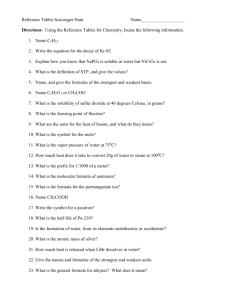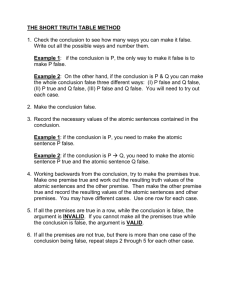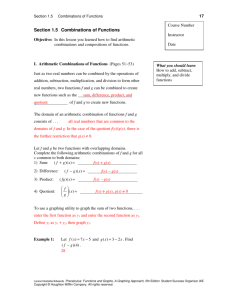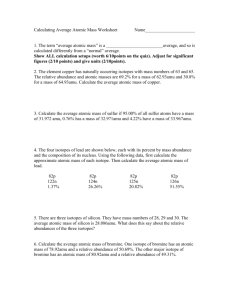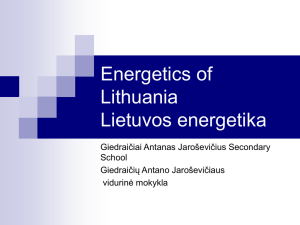Some Useful Number and Unit Combinations
advertisement
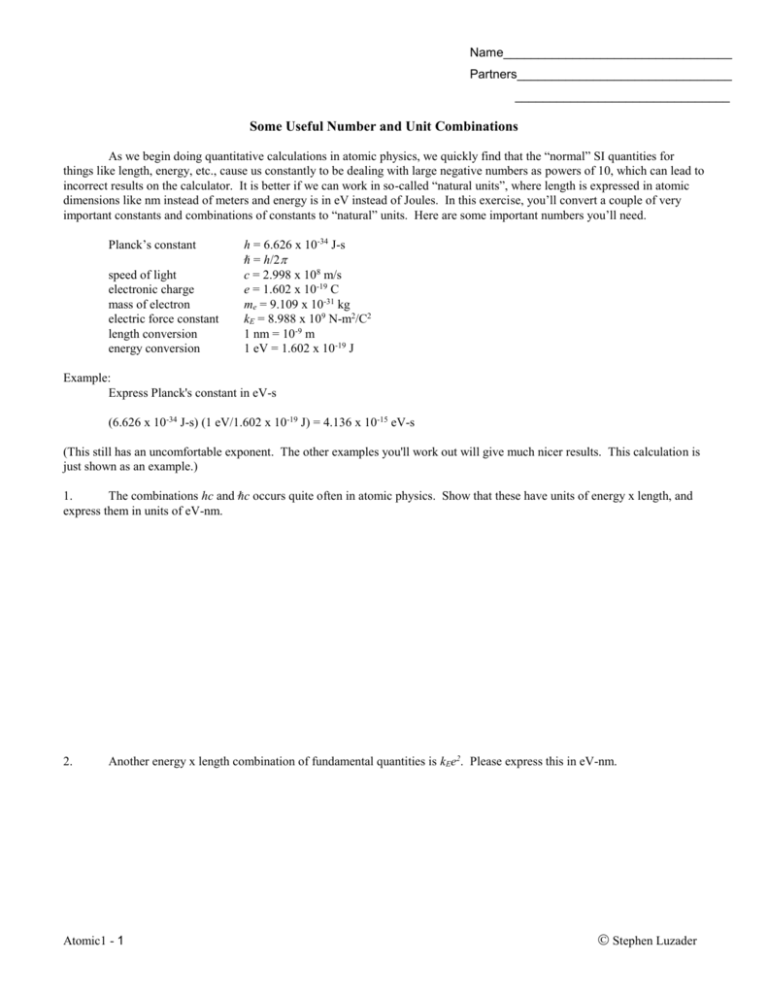
Name_________________________________ Partners_______________________________ _______________________________ Some Useful Number and Unit Combinations As we begin doing quantitative calculations in atomic physics, we quickly find that the “normal” SI quantities for things like length, energy, etc., cause us constantly to be dealing with large negative numbers as powers of 10, which can lead to incorrect results on the calculator. It is better if we can work in so-called “natural units”, where length is expressed in atomic dimensions like nm instead of meters and energy is in eV instead of Joules. In this exercise, you’ll convert a couple of very important constants and combinations of constants to “natural” units. Here are some important numbers you’ll need. Planck’s constant speed of light electronic charge mass of electron electric force constant length conversion energy conversion h = 6.626 x 10-34 J-s h = h/2 c = 2.998 x 108 m/s e = 1.602 x 10-19 C me = 9.109 x 10-31 kg kE = 8.988 x 109 N-m2/C2 1 nm = 10-9 m 1 eV = 1.602 x 10-19 J Example: Express Planck's constant in eV-s (6.626 x 10-34 J-s) (1 eV/1.602 x 10-19 J) = 4.136 x 10-15 eV-s (This still has an uncomfortable exponent. The other examples you'll work out will give much nicer results. This calculation is just shown as an example.) 1. The combinations hc and hc occurs quite often in atomic physics. Show that these have units of energy x length, and express them in units of eV-nm. 2. Another energy x length combination of fundamental quantities is kEe2. Please express this in eV-nm. Atomic1 - 1 Stephen Luzader 3. It is often useful to remember the c, the speed of light in empty space, can be used as a unit. It can be combined with the mass of an object to express that mass as an energy. For example, a combination that appears often in atomic physics is h2/me , where me is the mass of the electron. In SI units, this is 9.1 x 10 -31 kg, which is an ugly number to punch into a caclulator. However, the energy equivalent is easier to work with. In eV, mec2 = 511 x 103 eV (511 keV). Watch how we can use this together with the results of exercise 1 to turn this into something relatively easy to work with: h 2 me 2 2 h c me c 2 (1240 eV - nm) 2 3.01 eV - nm 2 511000 eV We multiplied the numerator and denominator by c2 to create combinations of symbols that can be interpreted easily in "natural units". For practice, calculate the energy of the first Bohr orbit entirely in natural units, following this example. Atomic1 - 2 Stephen Luzader

